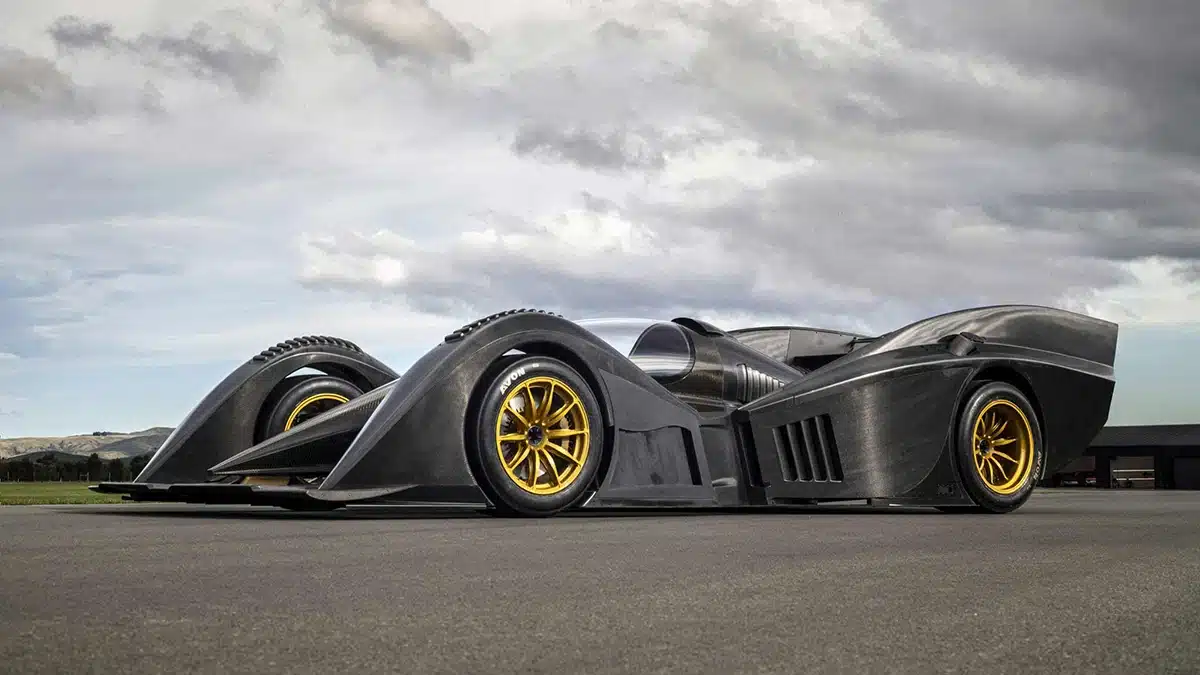The perfect young driver’s toy in the 70s that, unfortunately, never achieved commercial success.
What started off as a car designed to compete with Reliant ended up becoming a reality only after Reliant bought Bond in 1969 and released the car themselves, ironically.
To fully understand what the Bond Bug is, we first need to know a bit about the Bond company itself. Named Sharp’s Commercials until 1963, this Preston-based company was best known for its economic 3-wheel car, the Minicar, which was produced throughout the 50s and 60s. It spanned a whopping seven model iterations, going from the Sharp’s Minicar Mark A all the way through to the Mark G. In 1966, after 17 years of production, the Minicar was only then dropped for the Bond 875, which was another micro 3-wheel car and continued to sell well just as the Minicar did.

Although Bond’s new 875 model continued the trajectory of the Minicar in terms of sales, it was still living in the shadow of the Reliant Regal 325 which was released in 1962. And so, this brings us to how the Bond Bug came about.
As an effort to outmanoeuvre Reliant and their commercially successful Regal 325, Bond cars thought up the Bond Bug, a 3-wheeler that was aimed to shock the market into buying Bond again. Unlike the rather sensible 3-wheelers on the market at the time, the Bond bug was designed as a stylish, sporty and novel microcar that would take the focus away from Reliant and have consumers’ eyes focused on the bright orange Bug instead.

Before Bond cars had a chance to release the car, the company was bought in 1969 by the same competitors that they were trying to beat. Nonetheless, the Bond Bug still managed to make it to production, even if it was under Reliant ownership.
Each and every Bug was sold in bright orange paint with black decals situated on the front and at the rear pillars. Rather than through conventional doors, the Bug was accessed by lifting the front canopy forward which is still an incredibly rare door-type today.
The car was powered by the Reliant light-alloy 700cc 4-cylinder engine from the Regal, which produced a meagre 29hp and resulted in the Bug being capable of 0-60mph in 20 seconds with a top speed of 76 mph. It did get 46 miles per gallon, though!

Aside from the front-hinged canopy and black decals, the Bug’s other standout features included black wheels, visible rear suspension springs, a racing steering wheel and mudflaps (available in the top trim level), flared rear wheel arches, a central bonnet vent and a wedge-shape design.
Only around 2,200 Bugs were sold by the time Bond called it quits and ceased production due to fierce competition with the Mini and Reliant Robin. Today, the Bug still has a healthy cult following and some modern-day owners have even been seen swapping the original engines for Suzuki Hayabusa engines, resulting in some bonkers performance.
Let us know your thoughts on this wonderfully weird card, in the comments!
If you enjoyed this, you may also like: ‘Morgan’s 3 Wheeler Returns With a Bang’
For more articles like this, receive our weekly e-newsletter, including partner deals and all things motoring, register your email below.
Please note: You cannot subscribe to Smart-Motoring unless you put a tick in the checkbox below to indicate have read and agreed to our privacy policy.




I saw about 5% of the taxed and road legal ones remaining the other day driving down the M6. All 8 of them including a rare, and converted 4 wheeled one.
The engines were easy to work on – apart from access – in the Regal and supervan lll. Loosely based/copied from an old Austin design?
Bond’s 875 used the drive train from the Hillman Imp in a far lighter and less stable car. Said to be capable of around 100mph.
Bugs were aimed at the youth market but no one had thought than a mini was cheaper, even cheaper s/h, was easier to insure and could carry 4 people and could corner far faster.
3 wheelers fitted a niche market here – cheap to tax and could be driven with a bike licence.